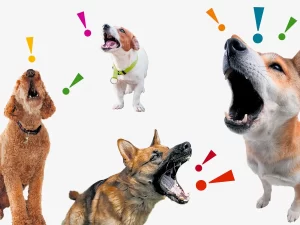
Ah, the timeless art of barking! It’s like the social media of the animal kingdom, where every “woof” is a tweet and every “growl” is a subtweet. But what exactly are these vocalizations trying to tell us? Are they updates on squirrel activities, or perhaps critiques on our poor choice of chew toys?
First, let’s consider the basic instincts behind the vocal cords. Barking is a form of communication, not just noise pollution. Animals use it to convey a myriad of messages and emotions like happiness, fear, or alertness.
For example, rapid-fire woofs may signal excitement or urgency. On the other hand, lower, throaty growls usually indicate a warning or discomfort. Then there are the ‘chit-chat’ barks, the random sounds that seem like small talk among animals. This type of barking could be a sign of boredom or even anxiety.
But not all barks are created equal. Pay attention to the pitch, volume, and duration. High-pitched barks are typically a sign of happiness or a plea for attention, whereas a long-lasting, monotonous bark might indicate boredom or loneliness.
And what about those midnight woofing sessions? Those could be a form of territorial declaration, especially if they coincide with a passing animal or human.
Remember, context is key. Vocalizations are usually paired with body language. A wagging tail, perked ears, or raised hackles can provide additional clues into the message being conveyed.
So next time you’re puzzled by the noise, consider it a unique form of dialogue between you and your buddy. Instead of “shushing,” maybe we should start listening. 🐾